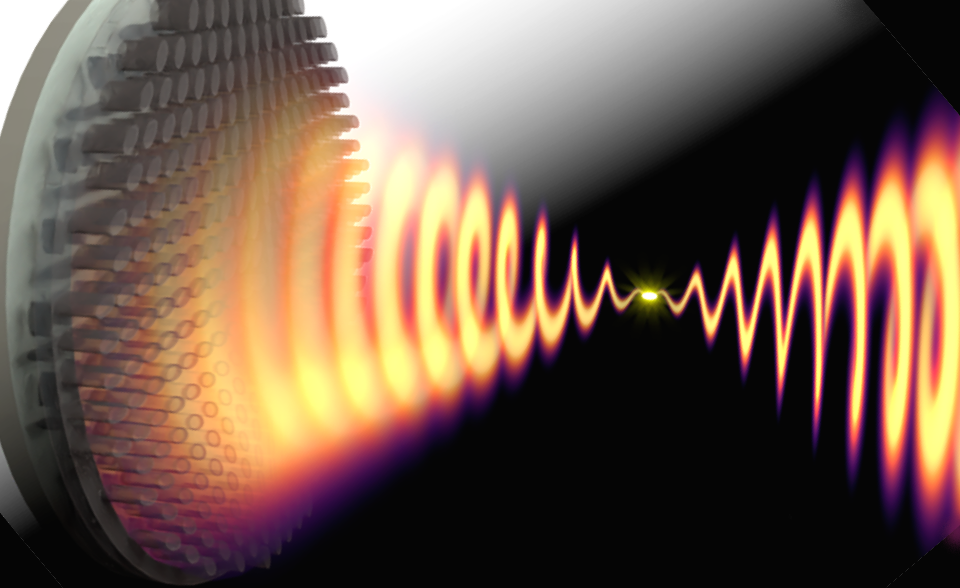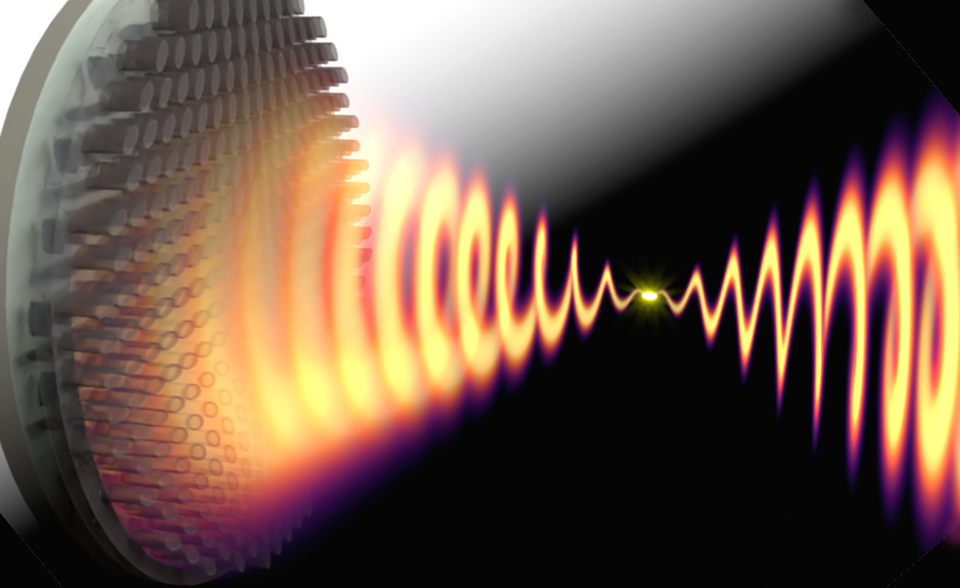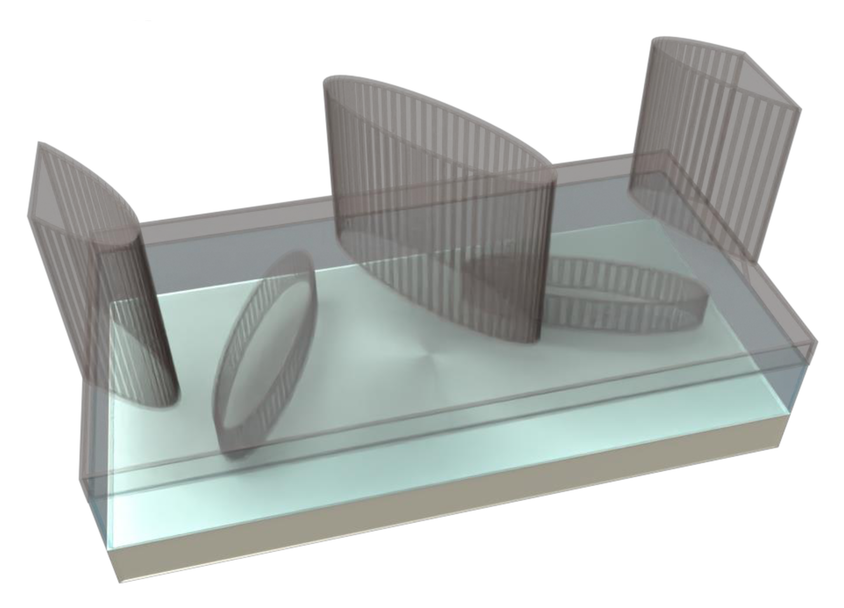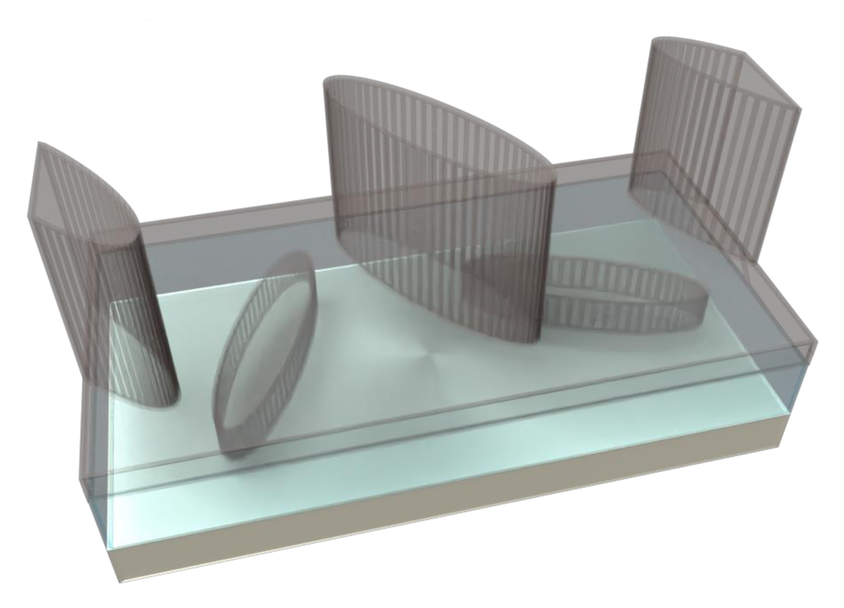Customizing Thermal Emission
Engineered surfaces can be used to manipulate laser light, focusing it on a particular point or giving it a specific polarization. Now researchers have developed a recipe for making surfaces with which to manipulate thermal radiation, such as the glow from a candle or a hot wire [1]. Previous work has demonstrated some degree of control over thermal radiation, such as collimating it into a beam. But the new work provides designs for surfaces that can transform the radiation from a hot object into a light beam with whatever frequency, polarization, or wave-front shape is desired. The result would be laser-like emission from a simple heat input.
The ability to manipulate thermal radiation is not new. With pinholes, lenses, and filters, one can convert the light from, say, an incandescent bulb into a focused beam of polarized, monochromatic light. However, this approach is not only bulky but inefficient, as much of the original light is lost in the process. Now Andrea Alù and his colleagues from the City University of New York have devised a more efficient and compact way of manipulating thermal radiation. They imagine using a surface that can be placed on top of an object to transform its heat into light that is beamed in a particular direction with a specific polarization and a nearly monochromatic spectrum.
The team’s strategy is based on the burgeoning field of metasurfaces, which are arrays of tiny optical elements that act on incoming light in coordinated ways. The team’s thermal metasurface design consists of an array of silicon pillars whose sizes are less than the desired output wavelength. Each pillar has an elliptical cross section, so that the thermal radiation emitted along its long axis differs from that emitted along its short axis. By choosing the orientation of each pillar, the researchers could shape the thermal emission from point to point along the surface.
But there’s a catch. This sort of local control—which is the bedrock of metasurface technology—is only supposed to work when the emission from one pillar is coherent with the emission of its neighbors (the light waves are synchronized). This coherence can be expected when the pillars are excited by a laser, but it is not expected when the excitation is thermal.
Alù and his colleagues solved this problem by including a well-known collective resonance effect that occurs on patterned surfaces, such as gratings [2]. This effect temporarily traps light at the surface, creating “cross talk” between separate regions that causes their emitted light to become synchronized. By arranging the pillars in a large-scale bilayer pattern, Alù’s team found that they could generate this nonlocal behavior while still maintaining the local control based on the orientation of individual emitters. “Our proposal is a way to really endow a metasurface with complete control over thermal emission,” Alù says.
The researchers generated a kind of “alphabet” of pillar patterns that engineers could program onto a surface to give any desired output of thermal emission. The team simulated a handful of possible arrangements, such as one that turns thermal emission into a nearly monochromatic beam and another that focuses it to a point. They also devised a metasurface that can impart a twist in the wave front—called orbital angular momentum—of the thermal emission from an object. “This is way beyond what anyone had been able to do before,” Alù says.
The ability to control thermal emission could lead to new light sources that require no electricity. “The dream is to have some form of radiation that is close to a laser, but comes from a thermal source, which you can just heat up,” Alù says. He and his colleagues write in their paper that their designs are within current manufacturing capabilities, as tiny pillars are commonly fabricated with lithography techniques. One challenge will be precisely orienting the pillars according to the recipe. Another complication will be stacking pillars in double layers, as some of the team’s designs require. Still, there are simpler patterns that the researchers plan to fabricate as a demonstration of their technique. And they foresee one early application for their metasurfaces in the control of LED light, which is not thermal radiation but has the same incoherence.
Photonics expert Zongfu Yu from the University of Wisconsin–Madison says that Alù and his colleagues have demonstrated the essential role played by nonlocal effects in controlling thermal emission. “This work illustrates the design principle in an intuitive way, with recipes that others can simply follow to design new emitters.” Yu believes that these metasurfaces could be useful for lighting, cooling, and energy applications.
–Michael Schirber
Michael Schirber is a Corresponding Editor for Physics Magazine based in Lyon, France.
References
- A. C. Overvig et al., “Thermal metasurfaces: Complete emission control by combining local and nonlocal light-matter interactions,” Phys. Rev. X 11, 021050 (2021).
- J.-J. Greffet et al., “Coherent emission of light by thermal sources,” Nature 416, 61 (2002).







